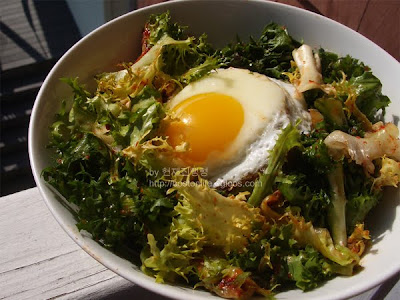
I often question: is it possible to indulge without guilt? Is it truly necessary always to feel remorseful after the midnight meal? Does this guilt increase pleasure or eat away it?
At least, I found one solution to tame the shameless midnight hunger without shame or remorse. The answer is called "shirataki". Shirataki is Japanese type noodle which has only about 12.5 kcal for 7 oz serving. The noodle is made from konjaku plant. Don't worry. This is not something a crazy scientist invented in a lab. The plant has high fiber, which forms jelly like curd. So unlike other noodles, this noodle is almost all fiber. It has great texture but not so much flavor. So I use brown version flavored with sea weed.
'Yaki' means stir-fried or grilled in Japanese. I found instead using other noodles, shirataki works great in yaki soba recipe. So, here it is. In the middle of night, wake up by the stomach screaming hunger, tame it with plateful of goodies with way less calorie (about 300kcal) and guilt.
Yaki Shirataki
7 oz shirataki, 7 oz bean sprouts (I used soy bean sprout, but any bean sprout would work), 2 slice of aburaage (deep fried tofu), 2Tb chopped green onion, 1/2 Tb sesame oil, 1 Tb soy sauce, pinch of pepper
1. Soak aburaage in hot water (watch out your fingers!) for a min, take out and squeeze them dry. Cut it into thin strips.
2. place shirataki and bean sprouts in the colander and wash them under the running water. Drain them well.
3. Heat sesame oil (be careful not to burn it) in the sautee pan and put shirataki and bean sprouts. Stir it well while cook gently.
4. Add aburaage, soy sauce, pepper and choped green onion. Stir well.
Serve hot. Adding sugar snap pea and strip shaped nori is also nice.
ps. You may wonder why I suddenly sound like a nutritionist. It is because I AM a nutritionist. You are hearing a confession of nutritionist. Yes, we do have midnight cravings, too. No, even though this dish was one without shame (therefore I can share), this is not always the case.








